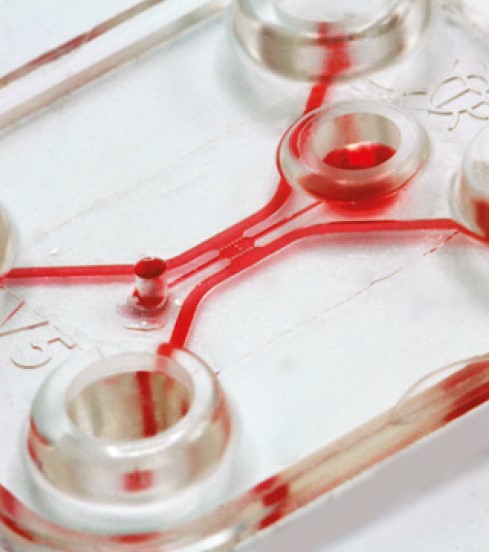HEALTH
We can bring proven sensors, lens-free imagers, biomaterials, microneedles, and microfluidics technologies to future products like wearables, implants, tools for pharmaceutical and biotech research and production, and exposome monitoring solutions.
For diagnostics and therapeutics, our R&D capabilities go right up to clinical trials with the Clinatec biomedical research center in conjunction with Grenoble Alpes University Medical Center.
Integration of heterogeneous technologies into innovative systems
CEA leverages a wide portfolio of advanced sensors and transducers (PPG, GSR, bioimpedance, PMUT, OLED, and electrochemical) that can be integrated with the associated electronics and signal processing capabilities to measure multiple heterogeneous parameters simultaneously and extract relevant physiological information. Some examples of innovative devices:
• Optical and ultrasound measurements to monitor blood pressure continuously with no arm cuff
• Bioimpedance measurements to track body composition parameters like fat mass and hydration
• Innovative combinations of electrical and optical measurements to calculate mental states
CEA technologies are developed based on processes already in use in volume-manufacturing scenarios for innovative solutions that are easy to scale up.
Another example of solution is our microneedle technology based on absorbable polymers. We can fabricate microneedles on-demand for specific use cases like:
• Dissolving microneedle patches for timed-release drug delivery or painless vaccination
• Microneedle patches combined with sensors to measure interstitial fluid for diagnostic and monitoring purposes
Our microfluidic chips can be cointegrated with other devices like sensors and lensless imagers, for example, to monitor the functionality and viability of organoids-on-chip encapsulated within the chip and designed to replicate the in vivo functioning of specific human cells to:
|

|
• Speed up biotech and pharmaceutical discovery and development by anticipating safety and efficacy in humans, by screening multiple candidates on a single chip rather than on cells in traditional culture or on animals
• Personalize medical treatments for specific cases by testing a cancer treatment on a chip that replicates an individual patient’s tumor, for example, before administering the most relevant treatment
“Our sensors, lens-free imagers, biomaterials, microneedles, and microfluidic circuits are making new diagnostic, therapeutic, and monitoring solutions possible.”
|
| 
Olivier Fuchs, Health Technologies Partnerships Manager CEA
|